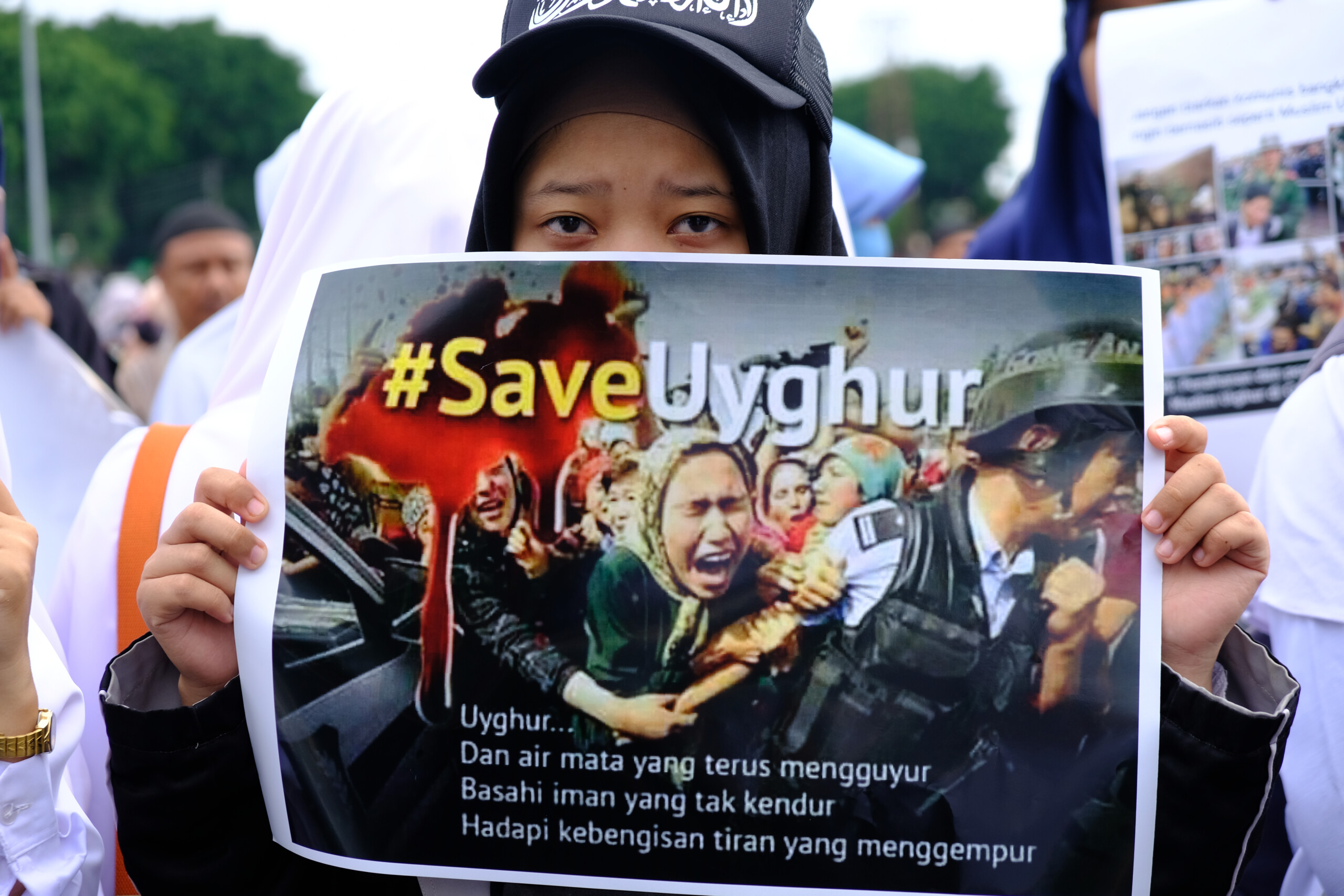


Last week, while hosting Arab diplomats in East Turkistan (Xinjiang to China), Chinese officials boasted about the “creative governance measures” they have implemented in the region. They are right to do so. China’s policies in Xinjiang are so innovative they could probably obtain a patent for them.
But the world seems uninterested in the killing of Uyghurs, the number killed is unknown, and China maintains its innocence.
So far, Chinese officials have described these policies very simply: “setting up vocational training centers, saving people from religious extremism and unemployment within two years, thus rooting out terrorism.” As a Uyghur author who grew up in the Uyghur region, most of my family members live there and I would like to explain these “creative measures” in a little more detail.
In the past, experts have reminded China that it is not possible to imprison an entire population and advised China not to target the Uyghur people while punishing “separatists.” However, China showed the world that this was possible, establishing more than 380 camps in 2017, imprisoning more than 3 million people ( (1/5 of the population, all those of military age) and detaining them for six years. (READ MORE: Hong Kong Affords a Glimpse of the Future for Taiwan)
Although today’s modern surveillance technology has made imprisoning a population possible, China has been unique in its willingness to use it to destroy what it believes is the enemy within the country.
Colonial powers around the world have often chosen massacre as the best way to control or reduce the population of native people. But by adding sterilization and family separation to the mix, China has created ways to achieve this goal more effectively. By this method, China’s own population statistics show that Uyghur birth rates have sharply declined. In 2017 and 2018, about one million fewer Uyghurs were born than had been in years past. In China they have destroyed not only the unborn babies of their “enemies,” but also their sperm and eggs, something even the most lethal rulers in the past have not attempted.
Until recently, repressive regimes punished political criminals with controversial sentences. These sentences were usually criticized by the international community, the state was typically subject to an economic embargo, and therefore the offending state suffered social and economic losses.
But China has blocked all kinds of debate by implementing extrajudicial punishment. Moreover, they created economic value by establishing factories in prisons and camps or by taking prisoners to factories outside of prisons and forcing them to work. To my knowledge, creating economic value while punishing “criminals” is a method that has not been tried much in the world.
China’s explanation of the reasons why Uyghurs were taken into concentration camps has been convincing enough to gain the support of the Islamic world, even though China has said that Islam was a mental illness and needed to be treated. Although the hostility Islamic countries have towards America and the West played a part in the Islamic world’s acquiescence, it required real inventive intelligence and effort on the part of the Chinese to discover this hatred and use it for one’s own benefit.
Never in the world has there been such unity of dictatorial regimes as in the last decade, a unity that has taken place under the leadership of China. While the range of dictators was previously limited to China, Russia, Iran, North Korea, and Cuba, it now ranges from the Saudi’s Bin Salman to Africa’s Zimbabwe, from Central Asia’s Nazarbayev to Venezuela’s Chávez, and from Belarus’s Lukeshenko to Egypt’s El-Sisi. They all walk hand in hand under the leadership of Xi Jinping.
It should be noted that China has managed to accomplish this alliance of tyranny not only with determination but also extraordinary fickleness. For example, China, which occasionally accuses the East Turkistan Islamic Movement Organization of being pro-Taliban and blacklists them in the UN, is today the first state to recognize and officially host the Taliban.
China, which accuses the Uyghurs (who rebelled against the Chinese occupation of their own lands) of separatism, defends Hamas’s entry into Israeli territory and taking people hostage as a war against occupation. So the extent of China’s creativity is astounding.
China has also made unprecedented progress in transforming its economic power into political power. Xi organized leaders, ambassadors, and journalists from poor countries to visit the Uyghur region, and paid these delegates for doing so. Many of these visitors were “persuaded” enough by China’s propaganda that China’s human rights record won support at the UN during a recent five-year review. Much of China’s support came from poor countries in Africa, Latin America, and the Middle East. China has shown great expertise in taking advantage of the weaknesses of states and leaders. (READ MORE: The US Learns China’s Lessons on Elitism)
Today, much of the world seems obsessed with counting and publicizing the exact number of Palestinians killed in Gaza. But the world seems uninterested in the killing of Uyghurs, the number killed is unknown, and China maintains its innocence. Keeping the locations of Uyghur killings a secret while committing massacres, keeping the world quiet while committing torture, and appearing as an ambassador of peace on the international stage while committing genocide are unique innovations of China. In other words, China is a pioneer of modern innovative genocide methods.
In short, the patent for “creative government measures” that Chinese authorities have unofficially requested must be granted.
